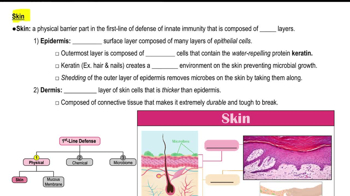Textbook Question
Explain each of these familiar phenomena in terms of what you learned in this chapter:
a. Pimples
b. Dandruff
c. Greasy hair and 'shiny nose
d. Stretch marks from gaining weight
e. Freckles
614
views
 Verified step by step guidance
Verified step by step guidance Verified video answer for a similar problem:
Verified video answer for a similar problem:



 6:54m
6:54mMaster Introduction to the Integumentary System with a bite sized video explanation from Bruce Bryan
Start learning